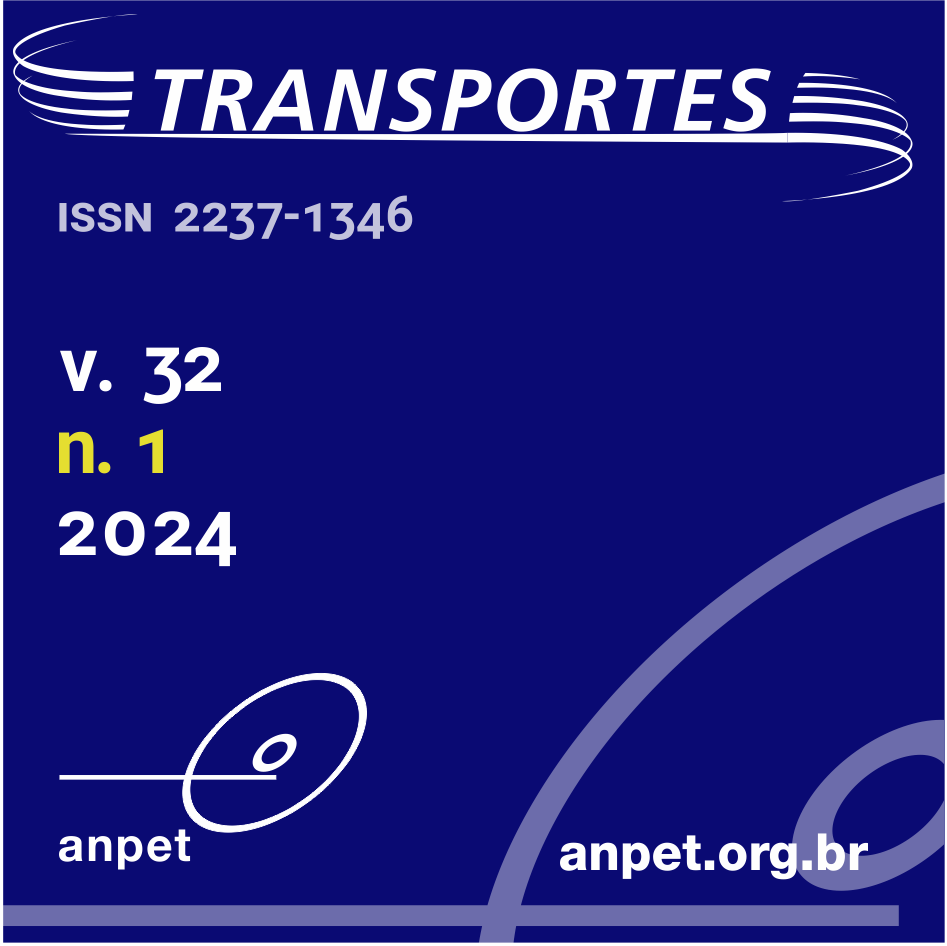Analysis of speeding practice on high-speed roads from naturalistic driving data
DOI:
https://doi.org/10.58922/transportes.v32i1.2910Keywords:
Speeding, Naturalistic Driving Study, Speed electronic enforcement, High-speed roadAbstract
Speed control is a challenge for urban management aimed at reducing traffic deaths and injuries. The objective of this paper was to evaluate the influence of operational characteristics in the occurrence of speeding on the high-speed roads of Curitiba (PR). The methodology was based on the use of naturalistic driving data and the application of binary logistic regression to investigate the relationship between road operational characteristics (explanatory variables) and speeding (response variable). The overall result indicates the practice of speeding during 20.64% of the travel time in free flow. The isolated analysis of the explanatory variables indicated that the presence of radar increased the chance of not speeding between 8.16 and 21.09 times for situations of any excess and above 20% of the limit, respectively. The joint analysis of the explanatory variables was statistically significant for the presence of radar and the presence of traffic lights, with the first reducing by 9.55 times and the second increasing by approximately 30% the chance of speeding. This result demonstrates the importance of electronic speed enforcement as part of the speed management strategy in urban areas.
Downloads
Downloads
Published
How to Cite
Issue
Section
License
Copyright (c) 2024 Alexandre Schipitoski Monteiro, Jorge Bastos

This work is licensed under a Creative Commons Attribution 4.0 International License.
Authors who submit papers for publication by TRANSPORTES agree to the following terms:
- The authors retain the copyright and grant Transportes the right of first publication of the manuscript, without any financial charge, and waive any other remuneration for its publication by ANPET.
- Upon publication by Transportes, the manuscript is automatically licensed under the Creative Commons License CC BY 4.0 license. This license permits the work to be shared with proper attribution to the authors and its original publication in this journal.
- Authors are authorized to enter into additional separate contracts for the non-exclusive distribution of the version of the manuscript published in this journal (e.g., publishing in an institutional repository or as a book chapter), with recognition of the initial publication in this journal, provided that such a contract does not imply an endorsement of the content of the manuscript or the new medium by ANPET.
- Authors are permitted and encouraged to publish and distribute their work online (e.g., in institutional repositories or on their personal websites) after the editorial process is complete. As Transportes provides open access to all published issues, authors are encouraged to use links to the DOI of their article in these cases.
- Authors guarantee that they have obtained the necessary authorization from their employers for the transfer of rights under this agreement, if these employers hold any copyright over the manuscript. Additionally, authors assume all responsibility for any copyright infringements by these employers, releasing ANPET and Transportes from any responsibility in this regard.
- Authors assume full responsibility for the content of the manuscript, including the necessary and appropriate authorizations for the disclosure of collected data and obtained results, releasing ANPET and Transportes from any responsibility in this regard.









